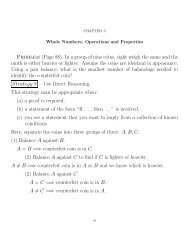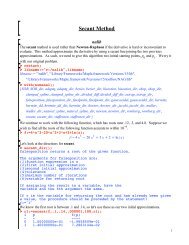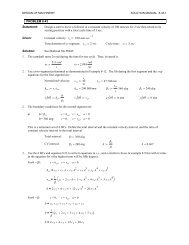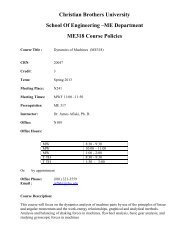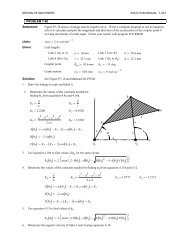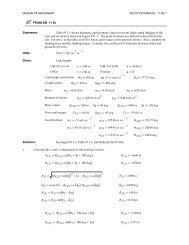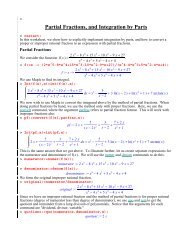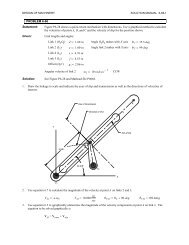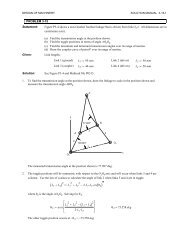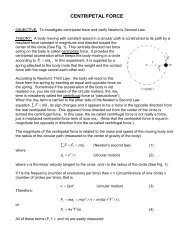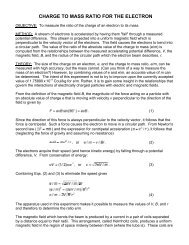Chapter 3 - CBU
Chapter 3 - CBU
Chapter 3 - CBU
You also want an ePaper? Increase the reach of your titles
YUMPU automatically turns print PDFs into web optimized ePapers that Google loves.
3.1. SEQUENCES AND THEIR LIMITS 43⇣ n 3 + 3⌘(10) lim = 1 2n 3 n 2 .h ⇣Proof. X = 4, 1114 , 1017 , 67124 , 122245 , . . . , n 3 + 3⌘i2n 3 n , . . . .n 3 + 32n 3 n12 = 2n3 + 6 2n 3 + n2(2n 3 n)= n + 62(2n 3 n)apple|{z}n 6n + n2(2n 3 n 3 ) = 2n2n = 1 3 n 2 ! 0by Example 3. The result follows from Theorem 3.1.10.⇤“Ultimate Behavior”Definition (3.1.8). If X = (x 1 , x 2 , . . . , x n , . . . ) is a sequence in R and ifm 2 N, the m-tail of X is the sequenceX m = (x m+n : n 2 N) = (x m+1 , x m+2 , . . . , x m+n , . . . ).Example. The 4-tail of⇣1, 1 2 , 1 3 , . . . , 1 ⌘n , . . . is⇣ 1X 4 =5 , 1 6 , 1 7 , . . . , 1⌘4 + n , . . . .Theorem (3.1.9). Let X = (x n : n 2 N) be a sequence and let m 2 N.Then the m-tail X m = (x m+n : n 2 N) converges () X converges. Inthis case,lim X m = lim X.Proof. Read in text — it is just a translation argument.HomeworkPages 61-62 #6a, 6c, 10, 11Extra: Prove lim( p n + 1p n) = 0.Hint for #10: Look at Theorem 3.1.5(c) and pick the right ✏.⇤



